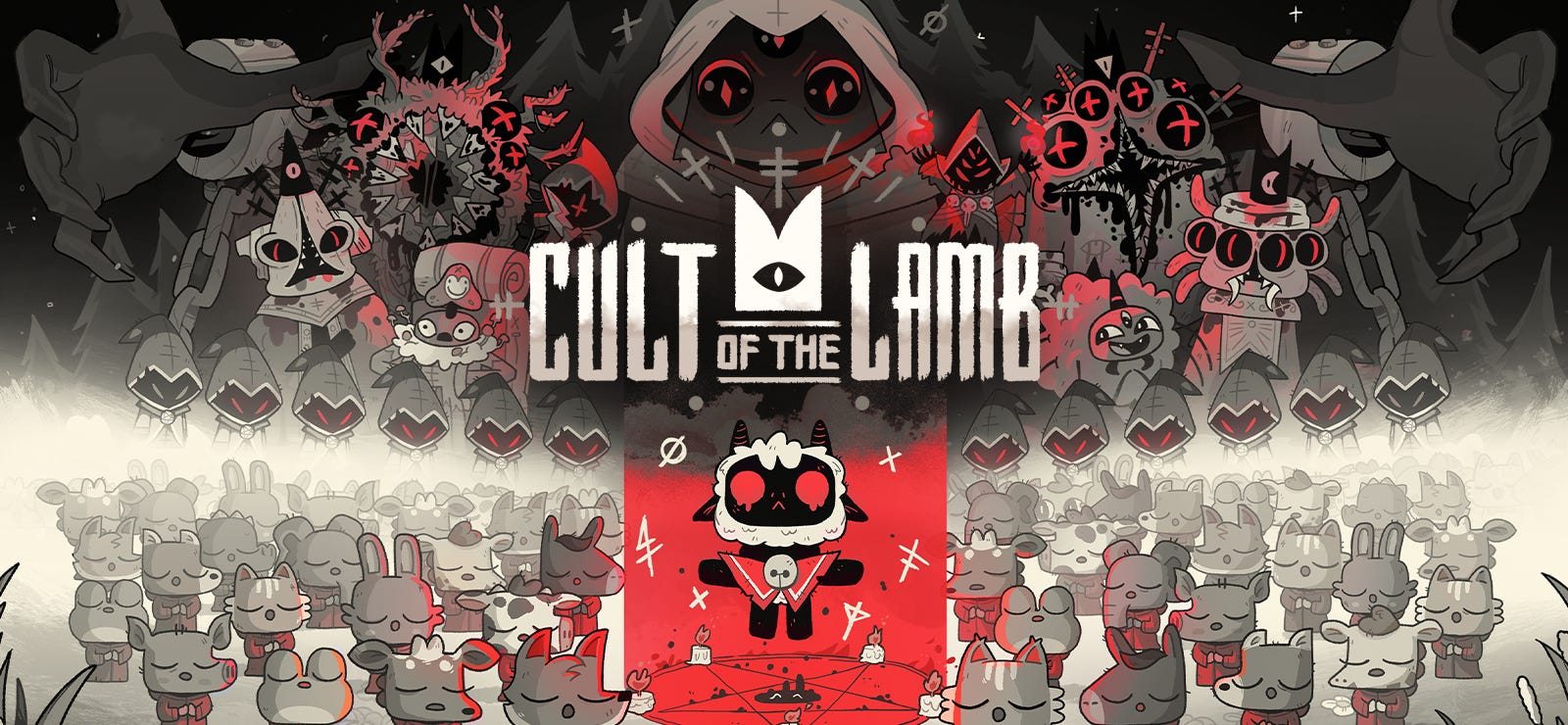Cult of the Lamb just Raised the Balancing Bar for Games
Make baaaaaah-lanced games. This is the way.
The Lamb Hath Risen (to Become the Game of the Summer)
🚨🚨🚨 SPOILER ALERT 🚨🚨🚨
This post contains mild visual and lore spoilers for Cult of the Lamb. You've been warned!
Like most of the gaming world, I’ve ceased all of my usual activities to start a cult of cute little woodland critters (I named my cult “Culthulhu.” …Get it? Get it?!). I’m a fairly benevolent ruler, all things considered; certainly, at least as far as false prophets serving dark gods are concerned. I used to simply sacrifice dissenters to the tentacled eldritch horrors from the deepest darkest bowels of the void between the stars, but now I simply throw ‘em in the stockades until they come to their senses. If that doesn’t work… well, then let’s just hope they’re not light sleepers… 😈
In developer Massive Monster and indie power publisher Devolver Digital’s highly-anticipated Cult of the Lamb, you play as… *drumroll*… the titular lamb! Sacrificed by four malevolent deities (the “Bishops of the Old Faith”) in the game’s prologue, the lamb is immediately granted new life by an equally sinister fallen god. The catch? This deity, ominously known as “The One Who Waits,” also has a major bone to pick with the four Bishops—so in exchange for this new life, the lamb must now build a cult in this shady godform’s name, so that he may one day break free of his chains and not-at-all usher in a new era of darkness and chaos.
On paper, Cult of the Lamb should not work nearly as well as it does. Half of the game is a dungeon-crawling roguelike1 not unlike its spiritual forbears Hades and The Binding of Isaac, while the other half is a cutesy town/farm/colony management sim akin to (a very dark and twisted) Animal Crossing. Which is a combination I never expected to see committed to code.
Recall our examination of video game genres from way back in Volume 1. Roguelikes (which are Action games) and town/resource management sims (which are Sandbox games) speak to very different sets of gamer motivations. While games crossing, mixing, and matching genres isn’t in itself unprecedented—indeed, it’s very common—Cult of the Lamb’s choice of genres to combine certainly sounds… strange.
Until you actually start playing it, that is.
A Masterclass in Balancing Your Game
Personally, I’m not a fan of roguelikes or town/colony management sims. They both contain gameplay elements I enjoy—for instance, I enjoy plenty of action games, namely platformers. I also enjoy building systems from the ground up, a-la SimCity, as long as the game eases you up its learning curve. But roguelikes are far too grindy and punishing for my tastes, and most sandbox games decidedly do not ease players up their learning curves.
Cult of the Lamb, however, has impossibly succeeded in mashing up these two entirely disparate genres, thanks to one key ingredient: balance. This game exemplifies balance—both mechanical balance and holistic balance—to such a huge degree that I already consider it required playing for budding game designers who want to understand how a properly balanced game looks and plays like.
Here’s why.







